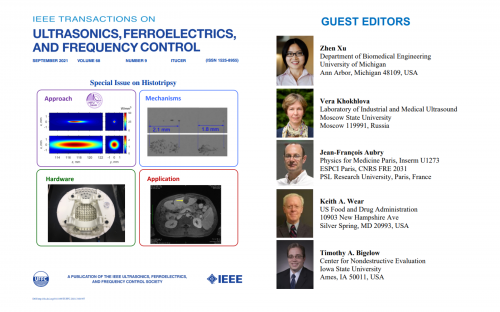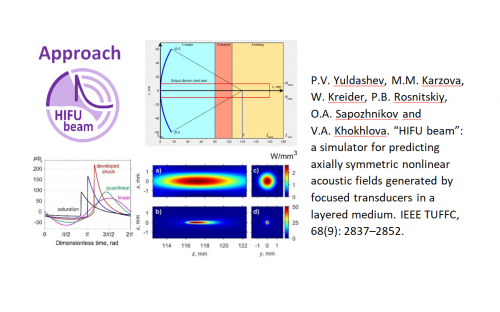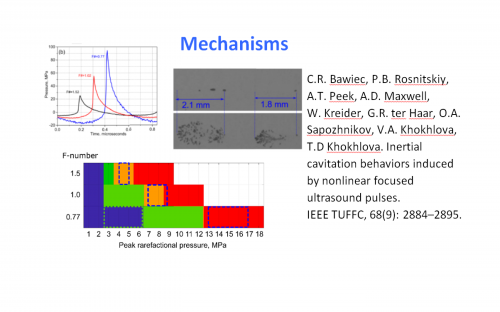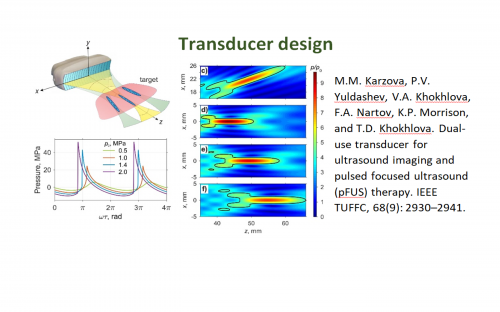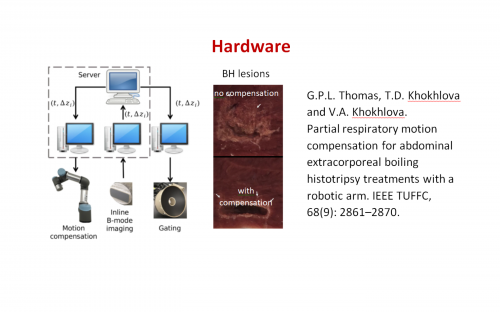Special Issue of IEEE UFFC on histotripsy
In September 2021, a special issue on histotripsy of the IEEE Transactions on Ultrasonics, Ferroelectrics, and Frequency Control was published. Histotripsy is a new therapeutic technology to liquefy tissue into acellular debris using sequences of high-power focused ultrasound pulses. The research on histotripsy has been rapidly growing in the past decade and this special issue reflects most recent achievements in the methods, mechanisms, hardware, and applications of histotripsy. One of the organizers and editors of the issue was V.A. Khokhlova. Four articles of the issue were co-authored with members of the LIMU team: V.A. Khokhlova, O.A. Sapozhnikov, P.V. Yuldashev, M.M. Karzova, P.B. Rosnitsky, F.A. Nartov.
Introduction to the Special Issue was written by the Guest Editors: Zhen Xu, Vera Khokhlova, Jean-François Aubry, Keith Wear, Timothy Bigelow.
The paper “HIFU beam: a simulator for predicting axially symmetric nonlinear acoustic fields generated by focused transducers” by P.V. Yuldashev, M.M. Karzova, W. Kreider, P.B. Rosnitskiy, O.A. Sapozhnikov, and V.A. Khokhlova presents a new freely available software for modeling nonlinear focused beams generated by HIFU transducers, including shock-wave fields typical for histotripsy.
The paper “Inertial cavitation behaviors induced by nonlinear focused ultrasound pulses” by C.R. Bawiec, P.B. Rosnitskiy, A.T. Peek, A.D. Maxwell, W. Kreider, G.R. ter Haar, O.A. Sapozhnikov, V.A. Khokhlova, and T.D. Khokhlova proposes a new mechanism for bubble proliferating behavior, which is shown to be determined by the degree of nonlinear distortion of HIFU focal waveform and provides a mechanism for pHIFU-based drug delivery and less disruptive tissue stimulation.
The paper “Dual-use transducer for ultrasound imaging and pulsed focused ultrasound (pFUS) therapy” by M.M. Karzova, P.V. Yuldashev, V.A. Khokhlova, F.A. Nartov, K.P. Morrison, and T.D. Khokhlova presents the design of a compact dual-use 1 MHz transducer for ultrasound-guided pFUS without contrast agents to promote drug delivery to tumors.
The paper “Partial respiratory motion compensation for abdominal extracorporeal boiling histotripsy treatments with a robotic arm” by G.P.L. Thomas, T.D. Khokhlova, and V.A. Khokhlova introduces a practical and affordable unidirectional respiratory motion compensation method for enhancement of the efficiency of boiling histotripsy treatment and presents the results of its experimental evaluation.

